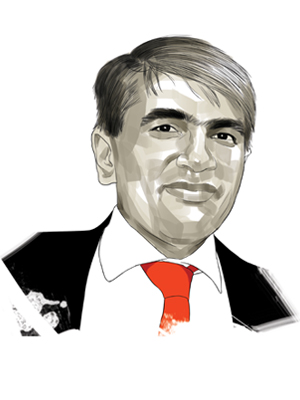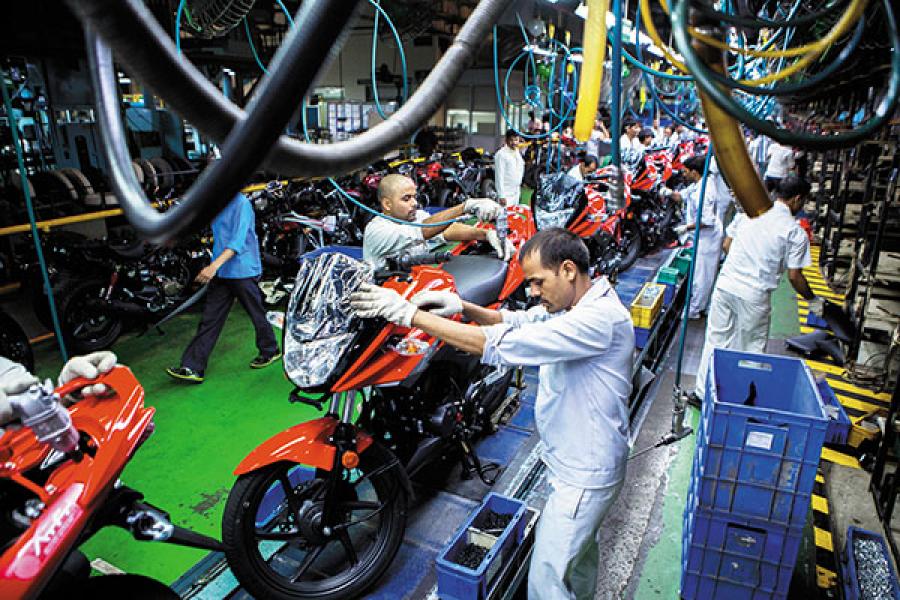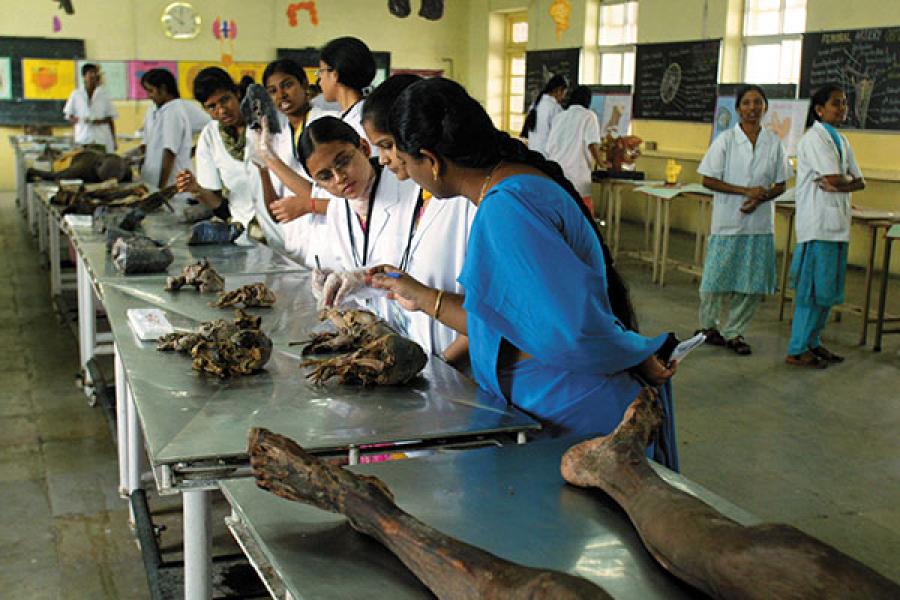
Will the new government unleash skills and entrepreneurship?
Fix the five geographies of work for a job renaissance
I memorised Pandit Nehru’s mesmerising ‘Tryst with Destiny’ speech as a child. But I am sure even he would agree that India missed her tryst with destiny. Of the three pledges in 1947—nation building, social justice and poverty reduction—the first we have redeemed in full, the second is work in progress, while the third has been painful.
Our failure to reduce poverty highlights the difference between independence and freedom; freedom is the ability to make personal choices, and India has 300 million people who will never read the newspaper they deliver, sit in the car they clean, drive the tractor they unload, or send their kids to the school they helped build. After spending decades in delusion believing that individuals will be empowered by the state, this government’s historical electoral mandate is pregnant with the possibility of a new appointment with India’s destiny.
I’d like to make the case that keeping this new appointment is about creating non-farm, formal, private sectors jobs because jobs help our citizens in a way that no subsidy ever can. This job renaissance is not only about opportunities for the young—the 10 lakh new entrants to the labour force every month for the next 20 years—but also involves relocating 300 million-plus adult workers to higher productivity. This renaissance depends on merciless execution in fixing our five geographies of work: Enterprise, physical, sectoral, education and legislative.
Enterprise Geography of Work
The key challenges here are the related birth defects of too few formal enterprises and too many sub-scale enterprises. India’s 6.3 crore enterprises only translate to 9 lakh companies. Of these, only 40,000 post at least a single job on a job portal on any day; only 7,500 have a paid up capital of more than Rs 10 crore; only 6,000 have a credit rating. This massive informality also leads to sub-scale enterprises: 84 percent of our manufacturing is done by companies with less than 50 employees.
There is nothing wrong with being small but enterprises can be a dwarf (something small that will stay small) or a baby (something small that will grow). Unfortunately, India has become a nation of corporate dwarfs because of regulatory cholesterol-created hostility to entrepreneurship. Improving the ease of doing business could create a Cambrian explosion of new venture creation and massively increase productivity and scale among existing enterprises. This requires rebooting the thought world of the MSME ministry, improving access for non-collateral credit, getting rid of the labour and tax inspector raj, implementing the Goods and Services Tax, growing the venture capital industry, digitising government interfaces, freeing foreign investment, and getting rid of outdated laws.
Physical Geography of Work
The key challenges in this geography are urbanisation and regional disparities. We have 50 cities with over a million people; China has more than 350. Job creation needs new cities because the emergency short-run response of taking people to jobs needs to be replaced by the long-run response of urbanisation that involves taking jobs to people. There will be strong regional disparities in 20 years; five states in the South and West (Gujarat, Maharashtra, Tamil Nadu, Karnataka and Andhra Pradesh) will see 50 percent of the country’s GDP growth but only five percent of the population growth.
We must define urbanisation carefully; it is not about shoving more people into Delhi, Mumbai or Bangalore, nor is it about well-planned economic wastelands like Chandigarh. Considerable economic energy of the last decade has come from Gurgaon near Delhi, Gachibowli near Hyderabad, Magarpatta near Pune, Whitefield near Bangalore and Mohali near Chandigarh. But unfortunately, they can’t be called smart cities. The plan for 100 smart cities must include real mayors for them. In 1924, Jawaharlal Nehru was the mayor of Allahabad, Rajendra Prasad of Patna, CR Das of Calcutta and Vallabhai Patel of Ahmedabad. Unfortunately, today, the only real mayor is the chief minister of Delhi. But the agenda should include low-cost housing, industrial clusters, better northeast rail connectivity, village roads, drinking water, warehousing capacity, and infrastructure.
Sectoral Geography of Work
The key challenges for this geography are low manufacturing employment, high agricultural employment and excess self-employment. These are closely related because the migration off farms is retarded by non-farm jobs and the poor cannot afford to be unemployed, so they are self-employed.
China became the world’s workshop because of great infrastructure, low wages and high foreign investment (60 percent of its manufacturing exports come from multinational companies using the country as a production base). But Chinese wages have increased at 17 percent in dollar terms every year for the last five years; they are now at 20 percent of US wages, up from 5 percent of US wages 10 years ago. This is India’s opportunity. It is important to recognise that not everybody can be an entrepreneur; so the 50 percent self-employment is mostly the working poor who cannot find wage employment.
Agriculture is not a solution to employment because of low productivity; 240 million Indians produce less food than 4 million Americans. The agenda is mostly about infrastructure of ports, roads, electricity, and de-bottlenecking land acquisition. But it will also be substantially driven by the ease-of-doing business initiatives listed in the enterprise geography of work.
Education Geography of Work
There are three challenges here that are contradictory: Quality, quantity and inclusiveness. The school quantity challenge has been ticked—enrolment is more than 110 percent in most states. Yet, the Right to Education Act needs to be replaced by a Right to Learning Act that focuses on outcomes.
We also need to create new pathways to higher education; the 105 lakh and 80 lakh kids who fail Class 10 and 12 exams every year fall off in the rigid 10+2+3 system. In pursuing the 12th Five Year Plan goal of a 30 percent GER (gross enrollment ratio of kids between 18 and 25 in college), we must remind ourselves that college is not what it used to be: 32 percent of retail sales clerks in the US have a college degree while only 1 percent used to in 1970; 60 percent of taxi drivers in Korea have a college degree (it was 5 percent in 1970); and 15 percent of high-end security guards in India now have a college degree. So we need new forms of college.
Our skill system needs to be better aligned with what employers want. This needs vocational universities that offer academic modularity (mobility between certificates, diplomas, and associate degrees), flexible delivery, and a new apprenticeship regime.
We need to deregulate distance education because global MOOCs like edX, Coursera, Udacity, etc cite India as one of their largest markets, yet Indian universities are not allowed to compete nationally or innovate. We also need a radical revamp of our higher education regulator that confuses university buildings with building universities and a medical education regulator whose corruption ensures our yearly output of 35,000 doctors is dwarfed by 15 lakh engineers.
Legislative Geography of Work
Our labour law regime ensures that 90 percent of our labour force works informally. The biggest problem is a benefits regime that confiscates 49 percent of low-wage worker salary; a toxic trade union regime because of the politicisation of unions and the criminalisation of politics; regulatory cholesterol that is vague and contradictory; and an employment contract that is effectively marriage without divorce.
We must fix our benefits regime by giving our employees three choices in how they are paid their salary: Opt out of their 12 percent employee contribution to Provident Fund (EPFO), choose to pay their 12 percent employer contribution to EPFO or the National Pension Scheme and choose to pay their ESI contribution to ESIC, or buy IRDA regulated health insurance. Today ESIC and EPFO do not have clients but hostages, and this breeds informality. The next wave of reform should be around inspections, factories act, definitions, etc and the issue of hire-and-fire should be deferred or left to the states.
The global financial crisis and the ageing of developed nations is a unique opportunity for India. Europe has the unsustainable combination of 7 percent of the world’s population, 25 percent of the world’s GDP and 50 percent of the world’s social spending. The sale of adult diapers crossed baby diapers in Japan this year. The genius of US—immigration—faces real political challenges.
India has made a new appointment with her destiny and she has a real shot of meeting this one by fixing our five geographies of work. As Victor Hugo said, nothing can stop an idea whose time has come. India’s time has come.
(This story appears in the 22 August, 2014 issue of Forbes India. To visit our Archives, click here.)
-
 Samir
SamirThe govt can\'t do all these things. The people of India have done it before and can do it again. The govt has to just get out of the way.
on Sep 15, 2014

















